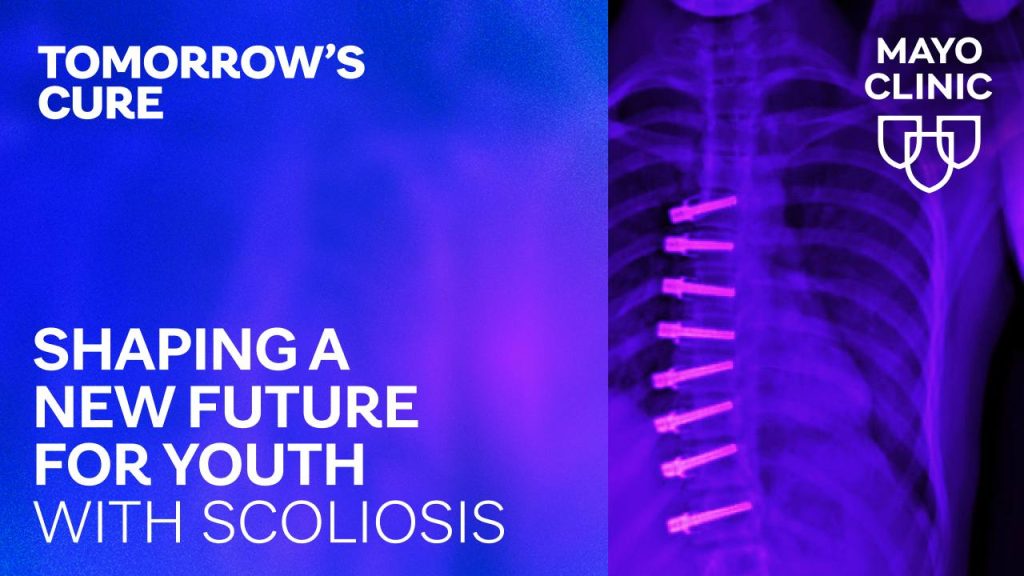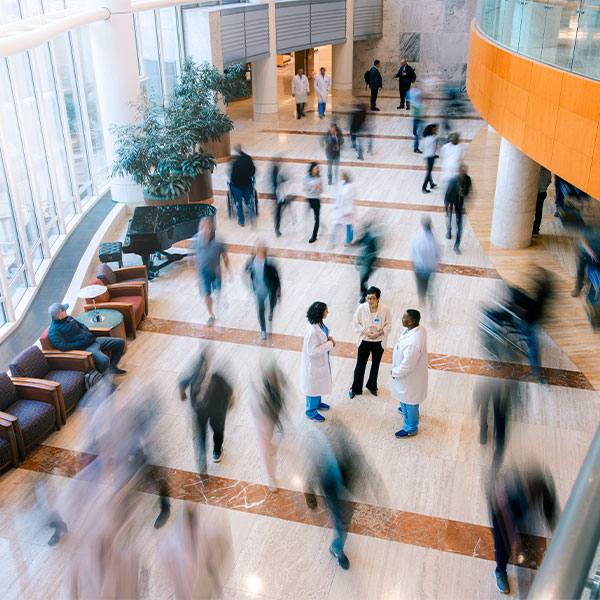-
Medical Innovation
Tomorrow’s Cure: Shaping a new future for youth with scoliosis

When the spine begins to curve sideways during childhood or adolescence, it can lead to a condition known as scoliosis. While traditional treatments have remained largely unchanged for decades, new advancements are offering young patients and their families more choices — and better outcomes. In this episode of Tomorrow's Cure, we explore the evolving landscape of scoliosis care and what these innovations mean for the future of spinal health.
Featured experts include Dr. A. Noelle Larson, orthopedic surgeon at Mayo Clinic, and Michelle Marks, executive director of the Setting Scoliosis Straight Foundation. Together, they have developed a shared decision-making tool that helps guide families through the complex process of evaluating treatment options.
Scoliosis treatment is determined by the size of the spinal curve and the child's remaining growth. A common non-surgical intervention is the use of a hard plastic brace, often worn 13 to 18 hours a day, that can be physically and emotionally demanding for young patients.
Historically, the only surgical option was spinal fusion, in which vertebrae are joined using metal rods and screws to stabilize and straighten the spine. Over time, the vertebrae fuse together. While spinal fusion can be highly effective, it reduces spinal flexibility, which can be challenging for young athletes and active individuals.
Now, a new treatment called vertebral body tethering (VBT) is offering a motion-preserving alternative. This technique uses a flexible plastic cord, which allows for spinal movement while gradually straightening the spine as the child grows. The tether adapts to the patient's development, offering a more dynamic and less restrictive solution.
"Scoliosis is not cancer or life-threatening per se, but to that patient and that family, it's life-changing. Going through either a surgery or years and years of bracing takes a toll," said Marks. "They need support, and they need to know that there are incredible professionals that are spending all their free time trying to advance care in every way they can for patients with scoliosis."
The goal of Dr. Larson's and Marks' decision-making tool is to empower families through shared decision-making. By outlining key considerations identified through extensive research, the tool fosters meaningful conversations between clinicians and families, creating space for thoughtful, informed treatment choices.
"I believe that many parents know what's best for their own child, and I hope that in my encounter with families, I can educate them and provide options and help translate the best available evidence and the best available research to that family," said Dr. Larson. "Then the family is really making the decision."
Importantly, the tool also ensures that the child remains actively involved in their care. "This tool is a way to engage the teenager and ask them questions, ask them to give their opinion," Dr. Larson continued. "It's a great opportunity to make sure the child has self-determination."
Learn more about the latest breakthroughs in scoliosis care in this episode of Tomorrow's Cure. For more episodes and featured experts, visit tomorrowscure.com.
Related Articles:
- Vertebral body tethering: Another option for treating scoliosis in children
- New Surgery for Scoliosis Keeps Teen Agile and Active
- Scoliosis Surgery Preserves Teen's Mobility, Boosts Self-Esteem
- Mayo Clinic Q and A: Do children with mild scoliosis need treatment?







